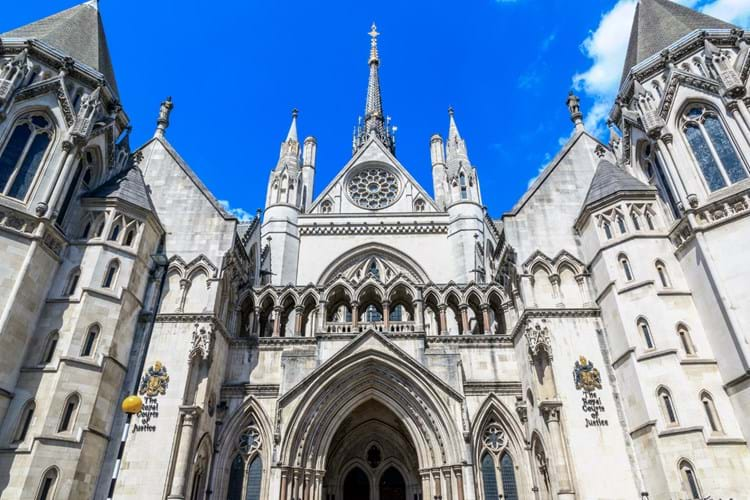Art dealer Simon C Dickinson Ltd (of Dickinson) has been cleared of acting negligently following a court case brought by former clients Lady Wemyss and Vilma Ramsay.
In the other case, Qatari Sheikh Hamad Bin Abdullah Al Thani won a £4.2m lawsuit against dealer John Eskenazi that centred on whether seven artefacts were genuine antiquities.
Dickinson vindicated
Lady Wemyss and Vilma Ramsay, the trustees of the Wemyss Heirlooms, brought the case against Simon C Dickinson Ltd following the sale of Le Bénédicité (Saying Grace) by Jean-Baptiste-Siméon Chardin (1699-1779), which had been owned by the family since 1751.
Dickinson sold the picture in 2014 on behalf of the trust for £1.15m to Scandinavian dealer Verner Amell but it was subsequently sold on again for $10.5m to the late investment banker Michel David-Weill.
The trust believed Dickinson was negligent in selling the painting for less than its market value and brought the legal action.
The dispute centred on the fact that Dickinson sold the picture as ‘Chardin and studio’ but it was later sold on as a full Chardin due to the discovery of a signature after a further clean. The ‘original’ and another version of the work hang in the Louvre in Paris, with a third rendition in the Hermitage in St Petersburg, Russia.
Deputy High Court Judge Gleeson in his December 2 ruling said it had been logical for Dickinson to deem the picture a part studio work - a description consistent with the leading expert’s Chardin catalogue raisonné as a “copie retouchée”.
He also believed the sale price achieved of £1.15m was appropriate, describing the $10.5m sum as “grossly inflated”. Judge Gleeson was of the view that “the price of the painting, if it were a clearly acknowledged autograph Chardin, would have been in the vicinity of £5m” and that in the absence of any evidence he believed that the “probable sale price… in this situation would have been £4m, reflecting the fact that some potential buyers would have been deterred by the uncertain export licensing position”.
After the judgment, a spokesperson for the trust said: “On the judge’s findings, Simon Dickinson had no duty to confirm the attribution of his clients’ valuable painting by consulting the leading expert; no duty to tell his clients the attribution on sale; no duty to tell them that he was selling the painting to another dealer looking to profit from it; and no duty to warn them that they might be selling the painting for much less than it might be worth.
“As a result, the trustees were exposed without their knowledge to the risk of a significant financial loss. This must raise wider questions about the operation of the art market. The trustees are therefore considering their options for the future in the light of the judgment.”
Disputed artefacts
In the case against John Eskenazi, a high court judge ruled on November 29 in favour of the Sheikh Hamad Bin Abdullah Al Thani and his company, Qatar Investment & Projects Development Holding (QIPCO).
The Qatari group purchased seven disputed artefacts between 2014-15. The items in question were two 2nd or 3rd century Bactrian inlaid marble busts, a group of Gansaharan sculpture (a 4th century schist head of a bodhisattva, a 3rd century schist frieze and a 5th or 6th century clay bust of krodha) and a late 7th century Vietnamese sandstone statue that at $2.2m was the most expensive piece. The defendants accepted that a gold, turquoise and garnet inlaid serpent bracelet purporting to date from c.1st century BC-1st century AD was inauthentic.
An additional fraud claim was made for a Vietnamese sandstone statue, alleging that Eskenazi knew the work was fake when he sold it. However, this was dismissed.
Judge Richard Jacobs ruled Eskenazi acted in good faith when he sold the objects but said the Qatari group had “proved” the items were inauthentic. Jacobs ruled: “In relation to all of the objects, the claimants have proved their inauthenticity, and the absence of reasonable grounds for the unqualified opinion as to their ancient origin.” He said QIPCO is entitled to rescind the contracts fo r misrepresentation, and to recover the price paid as well as damages for breach of contract and to damages for negligence.
The judge ruled the sum of £4.2m (the amount paid) plus damages should be paid by Eskenazi, the amount to be announced in due course. However, he added that “the claimants have failed to establish fraud in relation to the one object where this was alleged”.
John Eskenazi said: “This has been a long five-year battle costing an enormous amount of money. I am stunned and exhausted. The court chose to accept one group of experts’ opinion over another’s.”
A spokesperson at law firm Pinsent Masons, representing the Qatari group, said: “QIPCO is pleased that the court has ruled in its favour and confirmed their long-held beliefs regarding each of the seven objects included in these proceedings. While it is a matter of regret to QIPCO that they felt it necessary to take this action against John Eskenazi Ltd, they felt it was important to pursue this case as a matter of principle.”














